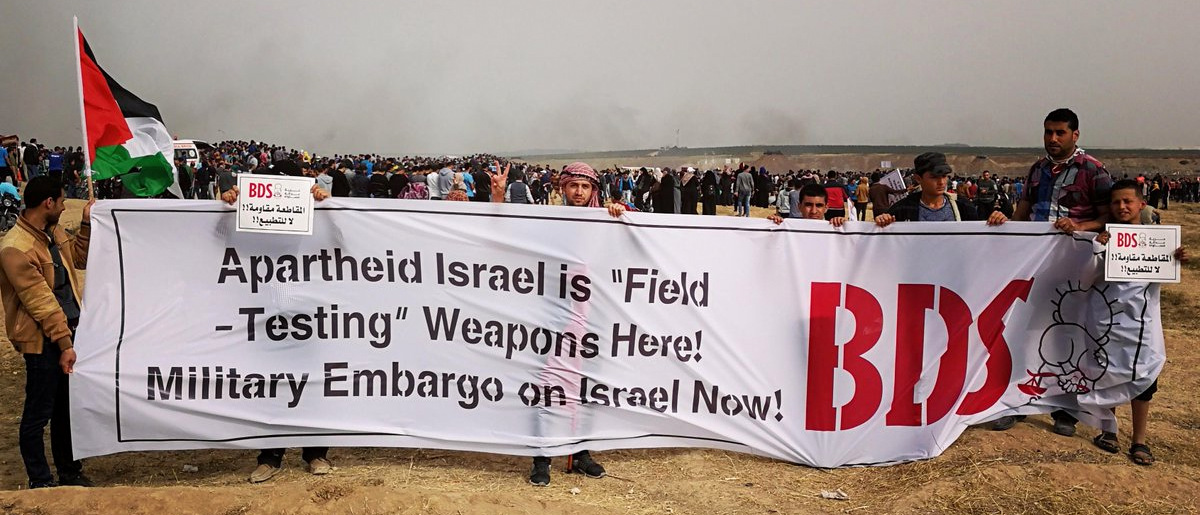A new report by Israeli activists on the technology and weapons deployed by the Israeli army in repressing the Palestinian “Great March of Return” protests charges that the Gaza Strip is seen as a “a lab and a showroom” for the country’s arms manufacturers.
The report was produced by Coalition of Women for Peace (CWP) and the organisation’s Hamushim project, which “works to expose the true human price of the Israeli military industry and arms trade, as well as to mobilise actions against it”.
According to CWP:
Israeli military operations in Gaza in the past decade have been especially profitable for the country’s military industries.”
“Both private companies and the Israeli government alike use Gaza as an opportunity to test new weapons, technologies and methods to be marketed based on their new operational success.”
The report states that “the Great March of Return provided an opportunity for Israel to present its advanced UAV technology in a new setting”, adding that “Israel has long been a major drone exporter”.
In particular, “a new tear gas drone, ‘Sea of Tears’, named after a famous hit song, was introduced. It has been reportedly designed specifically for use in Gaza.”
Israeli forces’ “use of drones fits into a worldwide pattern”, states CWP. “Though today aimed primarily against Palestinians, similar technology will likely be marketed and sold to oppress others worldwide.”
In addition to tear gas drones, the report examines the Israeli military’s use of UAVs “to fire at groups of Palestinians as they organised to defend themselves against Israeli aggression”.
“Such reports are particularly noteworthy,” CWP states, because while the military “continues to deny its use of killer drones, it takes pride in the advancements of their ever-growing fleet of UAVs”.
According to research by Hamushim, “the weapon of choice in the Great March of Return was in fact the American Remington M24 rifle, which is known to shoot targets up to 800m away.”
In addition, “Amnesty International forensic pathologists and military experts also identified wounds caused by Israeli Weapons Industries (IWI) Tavor rifles, with 5.56mm caliber ammunition. Those bullets often leave exit wounds expanding up to 15 cm to inflict maximal tissue damage.”
In 2014, the report notes Eli Gold, an executive at IWI, told the Marker: “After every operation of the kind taking place in Gaza right now, we are seeing a big leap in the number of foreign customers. We market aggressively abroad as it is, but the IDF’s actions definitely effect our work.”
https://www.facebook.com/middleeastmonitor/posts/10156457172016926
Meanwhile, Magal Security Systems “constructed the fence surrounding Gaza to enforce the brutal siege”. In a Bloomberg interview published 11 April, Magal’s then-CEO Saar Koursh gushed:
Gaza has become a showroom for the company’s ‘smart fences,’ as customers appreciate that the products are battle-tested.”
The report concludes that the Israeli military “made deliberate choices to kill and permanently injure considerable numbers of Palestinian civilians”, with the crackdown on the march also providing “the military with a platform to introduce and showcase the use of drones as the strategic choice of the present and future”.
Top Photo | March of Great Return Weapons Field Testing Here
![]() MEMO is licensed under a Creative Commons Attribution-NonCommercial-ShareAlike 3.0 International License.
MEMO is licensed under a Creative Commons Attribution-NonCommercial-ShareAlike 3.0 International License.


